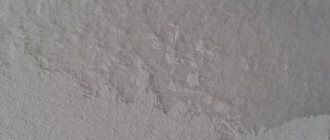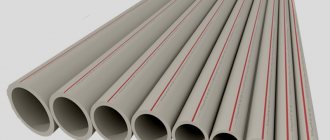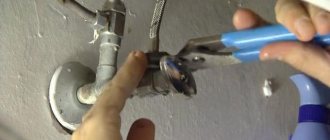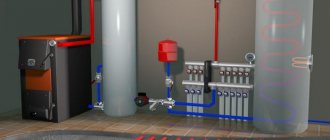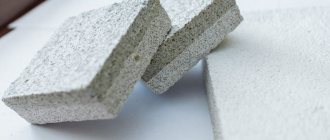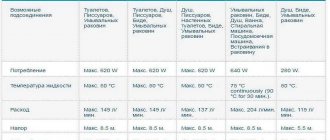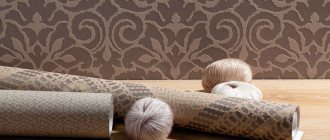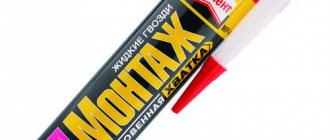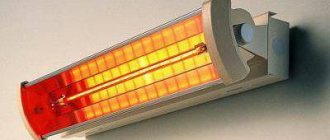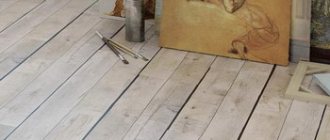Polypropylene is a white solid, a product of the polymerization of propylene and belongs to the class of polyolefins. Simply put, it is a plastic polymer with a wide range of applications. Today it is the most popular modern plastic due to its excellent consumer properties and versatility of use.
The material is obtained from propylene, whose formula is C3H6, as a result of the reaction between propene and a Ziegler-Natta catalyst. Thus, its chemical formula looks like this – (C3H6)*n. Today there are several varieties of this substance, they all have the same formula, but differ in spatial structure: isotactic, syndiotactic, atactic.
Each of them has its own physical and chemical properties. For example, an atactic polymer is characterized by fluidity and a low melting point, while an isotactic polymer, on the contrary, is elastic and dense and melts at 170 degrees Celsius.
Specifications
Today, polypropylene ranks second in the world market in terms of consumption, slightly inferior to polyethylene.
Let's consider its physical and chemical characteristics, which directly affect the scope of application.
Basic physical properties
- Low material density. Polypropylene has the lowest density of all plastics, which sets it apart from its denser counterparts.
- High strength. Numerous experiments have shown that it can withstand heavy loads, which far exceeds the capabilities of polyethylene.
- Low temperature resistance. The polymer copes well with negative temperatures, withstanding -10 degrees Celsius and lower temperatures.
- High temperature resistance. It can withstand not only low but also high temperatures, its melting point is 160 – 170 degrees Celsius.
- Resistant to sudden temperature changes. A quick change in temperature is also not a problem for this material. It withstands the rapid transition from minus to plus and back.
- Excellent dielectric properties. The high dielectric constant together with high dielectric strength provide wide possibilities for its use as an electrical insulating material.
- Easy processing. Polypropylene is easy to weld, cut, drill, and bends well, which significantly expands the possibilities of its use in industry and everyday life.
Chemical characteristics
- Resistance to chemical aggression. This feature of the material allows it to be widely used for the needs of chemical enterprises. It can withstand exposure to hot metal, various acids and fumes. In particular, this property is used in the manufacture of air ducts and ventilation for hazardous industries.
- Environmentally friendly and safe for the environment and humans. Numerous experiments have proven the non-toxicity and absolute environmental safety of this material for the environment and humans. Therefore, it is used in the production of water containers, as well as various liquids and bulk food products. Very often it is used in the construction of water purification facilities.
The main technical characteristics and properties of polypropylene are presented in the table.
| Basic properties of polypropylene | |
| Density, g/cm | 0,90 – 0,92 |
| Mass fraction of isotactic fraction, % | 95 – 98 |
| Mass fraction of atactic fraction, % | 2 – 5 |
| Tensile strength, kg/cm2 | 260 – 400 |
| Elongation at break, % | 200 – 700 |
| Melting point, Cº | 160 – 170 |
| Glass transition temperature, Cº | -10… — 20 |
| Degree of crystallinity, % | 50 – 75 |
| Frost resistance, Cº | — 10 and below |
| Thermal conductivity, cal/sec*cm*deg | 0,00033 |
| Specific heat capacity, cal/g*deg | 0,40 – 0,50 |
Chemical properties of polypropylene
Polypropylene, a relatively chemically resistant material. It does not react with most acids, which allows it to be widely used in the chemical industry, especially when installing ventilation ducts, in chemical and industrial plants.
Strong oxidizing agents such as nitric acid, oleum, and halogens have a more significant effect on polypropylene. Concentrated sulfuric acid and hydrogen peroxide react only with prolonged contact and at a temperature of 600 C, they lead to the destruction of the material.
Numerous studies have shown that polypropylene has high environmental and human safety indicators. It will not release harmful substances into the environment. It can be safely, without fear of poisoning, used to make containers for drinking water and food.
Scope of application
The production of polymer materials was a real breakthrough in its time. Low cost and excellent physical and chemical properties of polypropylene have contributed to the development of many industries. Thanks to the introduction of new technologies, it was possible to increase production efficiency and replace many expensive materials with more modern and progressive ones.
Polypropylene has served as the basis for the production of many modified materials, including high-strength plastics and mixed thermoplastic elastomers.
New high-tech materials are environmentally friendly and can be easily recycled and disposed of.
All this contributes to the fact that polypropylene is gradually displacing materials such as polyvinyl chloride, ABS plastic, polystyrene and others from the market. Widely used in all key sectors of the modern global economy: electronics, mechanical engineering, construction and many others. Largely for this reason, polypropylene has received the popular name “king of plastics.” And although it is not yet a leader in its segment, its scope is gradually expanding.
The abbreviation PP-RCT is a different material.
Which some refer to as the 4th type of polypropylene, although it is an improved third type of Random Coplymer.
This is heat-stabilized polypropylene, which has higher strength characteristics due to the fact that the number of faces in the PP-RCT crystal is greater than that of PP-R, which means the molecular bond is stronger due to the greater amount of contact between the crystals,
as a result, with the same pressure-temperature characteristics, the pipe can be made with a thinner wall and increase the throughput without increasing the outer diameter.
Such pipes also have much lower linear elongation with temperature changes. More resistant to ultraviolet radiation. And pipes made from this material can withstand temperatures of more than 100 degrees, versus 90 from PP-R.
This does not mean that all pipes can withstand temperatures of 100°C. Each manufacturer keeps the composition of polypropylene a secret, so before installing a pipe in your system, familiarize yourself with the characteristics and service class of this pipe.
But this is the topic of a separate post and I will of course check it.
Packaging materials and polypropylene fibers
Polypropylene is widely used in packaging. For example, polypropylene films are perhaps the most popular packaging material in the world. In some ways they are similar to polyethylene, but in some respects they even surpass it. The main advantages of polypropylene film over polyethylene are as follows:
- better resistance to high temperatures and aggressive substances;
- excellent consumer properties - transparency, strength, flexibility and environmental friendliness;
- best presentation characteristics.
Not long ago, so-called oriented films appeared on the market; a special production technology made it possible to significantly improve the already excellent qualities of polypropylene films. For example, the transparency of oriented film is four times better than that of conventional polypropylene material.
In recent years, polypropylene has become often used in the production of plastic containers - bottles, cans and other containers, as well as lids for them. In addition, it is used for the production of various containers and tanks for transporting chemicals.
The low cost of polypropylene fibers has ensured their widespread use in the textile industry.
Having a low cost, they are characterized by high strength and good elasticity. Another advantage of these synthetic fibers is their excellent heat resistance. Their only significant drawback is sensitivity to ultraviolet radiation, which somewhat hinders the widespread distribution of polypropylene fibers.
Polypropylene recycling
Nowadays, there are five main ways of processing polypropylene - extrusion, blowing, injection molding, foaming, molding.
Processing methods such as casting and extrusion are the most popular at present. Under their influence, extruded and injection molded polypropylene is obtained.
Extruded is made in the following way: polypropylene powder or granules are loaded into a chamber heated by steam, and the compound is squeezed out of it through a molding hole. As it leaves the reactor, the polypropylene hardens.
Molded polypropylene is produced by heating powdered/granular polypropylene without access to air, creating a viscous, fluid substance, then it is transferred to a mold where hardening occurs.
Application in mechanical engineering and electronics
The widespread use of the material in mechanical engineering, automotive and construction was facilitated by its high wear resistance. Many components for household appliances - refrigerators, vacuum cleaners, washing machines - are made from polypropylene. This synthetic material is also used in the production of cars. In particular, it is used to make interior parts, bumpers, shock absorbers and much more.
In electronics, it is used to produce housings for televisions, telephones, coils, lamp sockets, elements of switches - it is simply impossible to list everything. It's easier to say that polypropylene surrounds us everywhere in everyday life.
Prices for polypropylene sheets
The price of polypropylene will vary depending on several indicators:
- sheet thickness;
- weight;
- retail or wholesale.
You can find prices for polypropylene sheets in our catalog or in the summary table below:
| Sheet type | Dimensions (mm) | Weight, kg) | Color | Price (from, rub.) |
| PP sheet (cellular) | 5x2000x3000 | 4,8 | Blue | 949 |
| PP sheet (cellular) | 2x2000x3000 | 2,4 | Yellow | 475 |
| PP sheet (cellular) | 5x2000x3000 | 4,8 | White | 949 |
| PP sheet (cellular) | 5x2000x3000 | 4,8 | Black | 949 |
| PP sheet (cellular) | 2x2000x3000 | 1,98 | Green | 392 |
| PP sheet (cellular) | 5x2000x3000 | 4,8 | Green | 949 |
| PP sheet (cellular) | 2x2000x3000 | 1,98 | Blue | 392 |
| PP sheet (cellular) | 3x2000x300 | 3,3 | Blue | 653 |
| PP sheet (cellular) | 3x2000x300 | 3,3 | Yellow | 653 |
| PP sheet (cellular) | 5x2000x3000 | 4,8 | Yellow | 949 |
Goods for children
The exceptional safety of the material allows it to be used for the production of children's products.
Dishes, household items, toys and many other products for little ones are made from polypropylene.
The combination of several of its properties - environmental friendliness, high wear resistance, strength - determine its widespread use in everyday life.
World consumption of polypropylene is increasing every year. Its share in the production of consumer goods is steadily growing. It is gradually capturing new market segments, displacing less technologically advanced polymers, primarily polystyrene and PVC. Inferior in terms of environmental friendliness, they are gradually losing their position in the global market. Under public influence, European legislators are slowly but surely clearing the way for new technologies. Such important indicators as non-toxicity and easy disposal confidently make it a leader.
Another important factor contributing to the growing popularity of the substance is its low price compared to its competitors. Cost is the determining criterion in the production of any product, and therefore manufacturers are increasingly turning their attention towards cheaper and more technologically advanced materials.
The prospects for this high-tech material are very bright. It is obvious that its percentage in world consumption will increase. This is facilitated by constant research and the emergence of new technologies and modifications of polypropylene. Most likely, this will continue until more advanced synthetic materials appear, but even then propylene will be widely used in industry and the national economy.
Rehau pipes
These are products of the German company of the same name - a well-known manufacturer of building materials, including plastic and metal-plastic pipes for the installation of external and internal utilities.
Rehau pipes have been produced by the company since 1968 and are used in water heating systems, including heated floors, as well as hot and cold water supply lines. The manufacturing material is polyethylene cross-linked using the PE-Xa type - this modification is superior in performance characteristics to polymers cross-linked using the PE-Xb or PE-Xc methods.
The Rehau Rautitan brand unites 5 lines of polyethylene pipes: Stabil, Flex, Pink, His and Rauterm S. The materials of all 5 groups have a characteristic feature of the brand - they are connected to fittings using the axial pressing method, which provides a number of advantages:
- the connection by means of a sliding sleeve is ready for temperature loads and pressure immediately after execution - this is a technically simple and reliable technology with a minimal probability of making an error;
- at the joints of the pipe with the fittings, no narrowings are formed due to polymer sagging during soldering;
- fittings are unified for Rehau pipes of all lines;
- the connection is used on a wide range of diameters - from 16 to 63 mm;
- to connect pipes to devices, fittings of various designs and connecting tubes are produced;
- the formation of corrosion at the joint is excluded.
For comparison with polypropylene pipes and with each other, let’s briefly look at the Rehau Rautitan lines .
- Stabil – silver-colored pipes for universal use, used in water heating systems and water supply systems, including hot water supply.
The wall structure is marked PE-X/Al/PE-X: between two layers of cross-linked polyethylene there is a layer of aluminum - it does not increase strength, but protects water from oxygen diffusion and reduces thermal expansion.
Performance characteristics of Rehau Rautitan Stabil pipes
Operating Temperature (°C) Nominal pressure PN (bar) Service life (year) 20 18 50 70 10 50 95 9 10 Another “plus” of the metal shell and a feature of the “Stabil” pipes - the most expensive from Rehau - after bending they retain their given configuration.
- Flex – universal pipes (heating, water supply) are also silver in color, resistant to shock and chemicals, and are protected from oxygen diffusion.
They differ from Stabil in the absence of an aluminum reinforcing layer, which provides flexibility and elasticity, but increases elongation when heated. When installing, they require another expanding nozzle.
- Pink - a pink pipe on the outside, intended only for heating systems (radiators and heated floors), since after cross-linking it is not washed out of residual chemicals.
The inscription on the pipe itself “for heating only” also indicates its suitability only for industrial water.
- Rauterm S – pipes only for “warm floor” systems. They have thinner walls than Pink, which increases the internal diameter, but reduces the permissible temperature and pressure.
The material is designed for “quick installation underfloor heating” systems - using Rehau Varionova fasteners or Speed Plus Velcro.
- His – white pipe material, intended only for water supply systems, since it lacks an oxygen-protective layer. The cheapest type of pipes is Rehau.
Conclusions on the rational use of Rehau pipes:
- Stabil is a technically ideal solution for heating and water supply of any facility. But the versatility of the pipe is not in demand everywhere, so high costs may not be justified.
- Flex is cheaper than Stabil, but inferior to them only in static properties. Excellent for hidden wiring of heating systems and water pipes.
- Pink – radiator heating of large rooms, “warm floor” systems in rooms of modest size.
- Rauterm S – heated floors in spacious rooms.
- His – large objects with a significant number of “wet points”.
